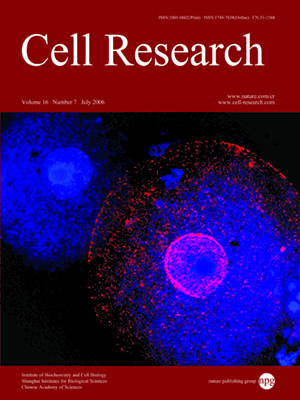
Volume 16, No 7, Jul 2006
ISSN: 1001-0602
EISSN: 1748-7838 2018
impact factor 17.848*
(Clarivate Analytics, 2019)
Volume 16 Issue 7, July 2006: 651-660
ORIGINAL ARTICLES
Upland rice and lowland rice exhibited different PIP expression under water deficit and ABA treatment
Hong-Li Lian, Xin Yu, David Lane, Wei-Ning Sun, Zhang-Cheng Tang, Wei-Ai Su
1Institute of Plant Physiology and Ecology, Shanghai Institutes for Biological Sciences, Chinese Academy of Sciences, 300 Fenglin
Road, Shanghai 200032, China; 2Agriculture and Agri-Food Canada, Pacific AgriFood Research Centre, Summerland, B.C., V0H-
1Z0, Canada
Correspondence: Wei-Ai Su(zstressc@online.sh.cn)
Nanog is a recently discovered homeodomain transcription factor that sustains the pluripotency of embryonic stem (ES) cells and blocks their differentiation into endoderm. The murine F9 embryonal carcinoma cell line is a well-documented model system for endoderm cell lineage differentiation. Here, we examined the function of Nanog in F9 cell endoderm differentiation. Over-expression of Nanog returns the F9 cells to the early status of ES cells and represses the differentiation of primitive endoderm and parietal endoderm in F9 cells, whereas it has no effect on the differentiation of visceral endoderm. In contrast, the expression of C-terminal domain-truncated Nanog spontaneously promotes endoderm differentiation in F9 cells. These data suggest that Nanog is required to sustain the proper undifferentiated status of F9 cells, and the C-terminal domain of Nanog transduces the most effects in repressing primitive endoderm and parietal endoderm differentiation in F9 cells.
Cell Research advance online publication 6 Jun 2006; doi: 10.1038/sj.cr.7310067
FULL TEXT | PDF
Browse 2029


